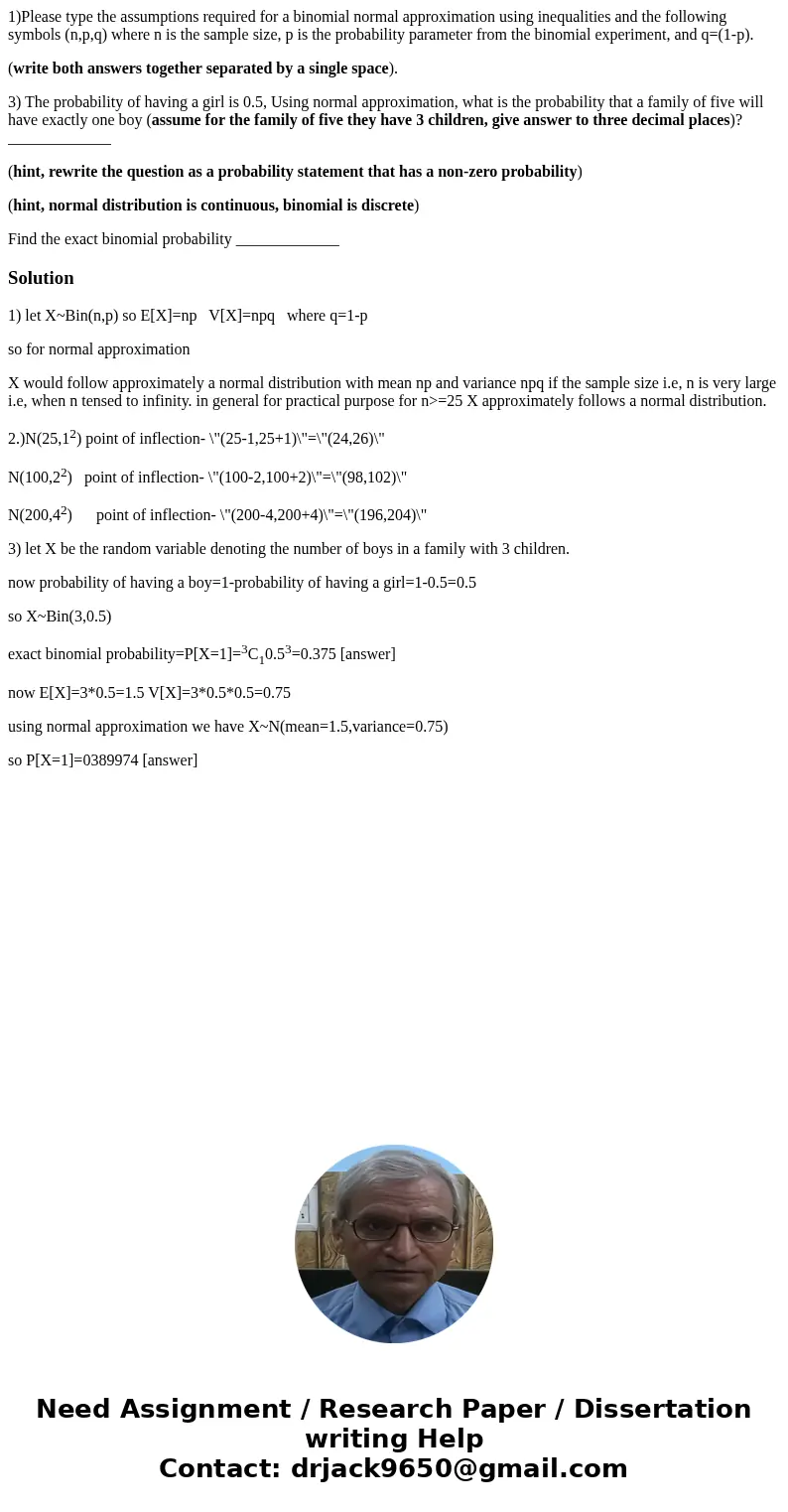1Please type the assumptions required for a binomial normal
1)Please type the assumptions required for a binomial normal approximation using inequalities and the following symbols (n,p,q) where n is the sample size, p is the probability parameter from the binomial experiment, and q=(1-p).
(write both answers together separated by a single space).
3) The probability of having a girl is 0.5, Using normal approximation, what is the probability that a family of five will have exactly one boy (assume for the family of five they have 3 children, give answer to three decimal places)? _____________
(hint, rewrite the question as a probability statement that has a non-zero probability)
(hint, normal distribution is continuous, binomial is discrete)
Find the exact binomial probability _____________
Solution
1) let X~Bin(n,p) so E[X]=np V[X]=npq where q=1-p
so for normal approximation
X would follow approximately a normal distribution with mean np and variance npq if the sample size i.e, n is very large i.e, when n tensed to infinity. in general for practical purpose for n>=25 X approximately follows a normal distribution.
2.)N(25,12) point of inflection- \"(25-1,25+1)\"=\"(24,26)\"
N(100,22) point of inflection- \"(100-2,100+2)\"=\"(98,102)\"
N(200,42) point of inflection- \"(200-4,200+4)\"=\"(196,204)\"
3) let X be the random variable denoting the number of boys in a family with 3 children.
now probability of having a boy=1-probability of having a girl=1-0.5=0.5
so X~Bin(3,0.5)
exact binomial probability=P[X=1]=3C10.53=0.375 [answer]
now E[X]=3*0.5=1.5 V[X]=3*0.5*0.5=0.75
using normal approximation we have X~N(mean=1.5,variance=0.75)
so P[X=1]=0389974 [answer]

 Homework Sourse
Homework Sourse